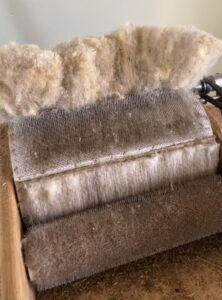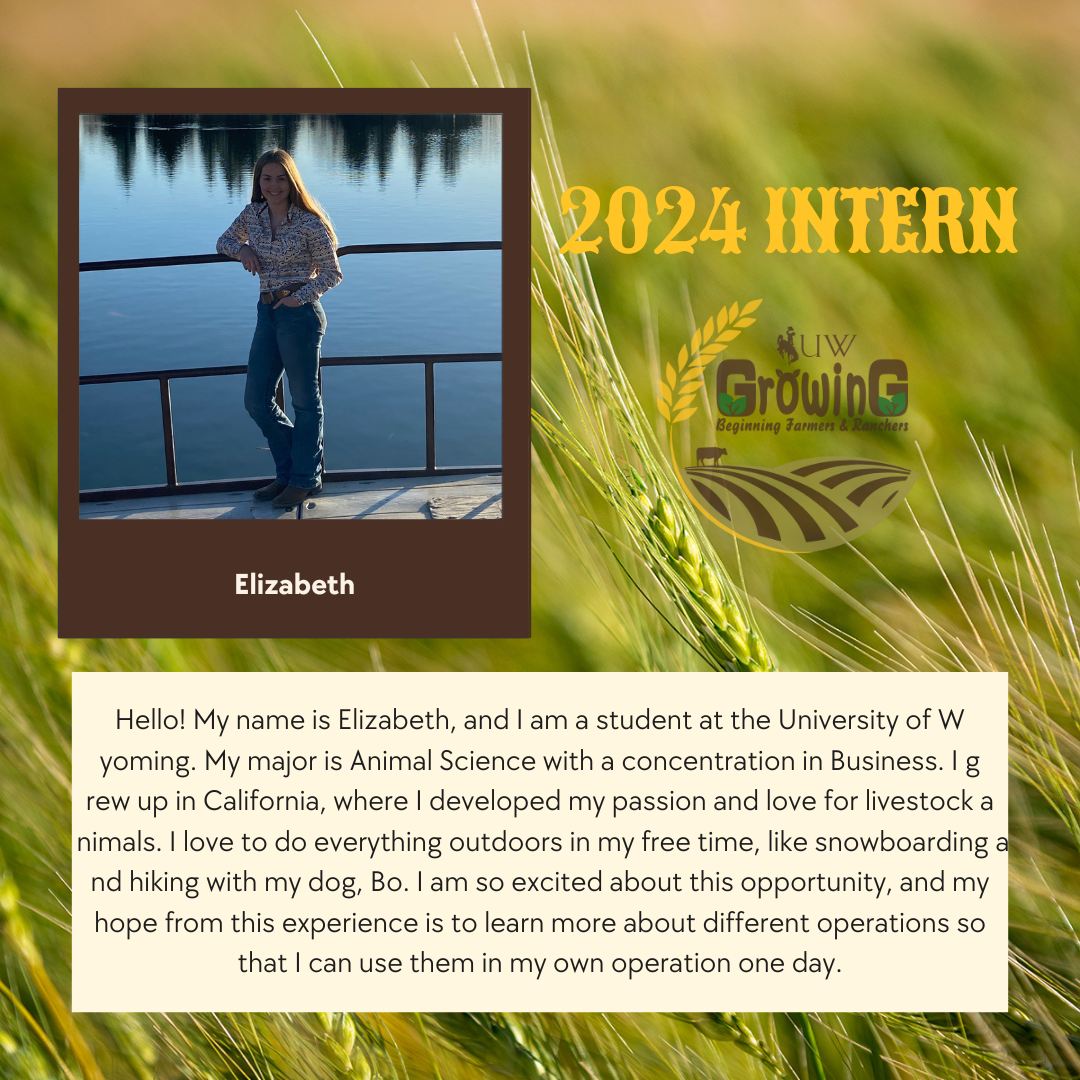All About Irrigation
#bfrdpwy #aginternship #RightRisk
Every week, I am surprised by how much I have learned and have yet to learn. This week, we focused on irrigation on the other piece of leased land. I learned about sprinkler and flood irrigation and how a motorized pump works. The picture shows the large diesel pump that draws water from a small pond. The property uses this irrigation in order to wash away the excess salts and minerals on top of the soil that causes the plants to not grow as well. BJ explained this is a major issue for grazing animals as it can cause urinary calculi and less forage for the animals to eat.

I continued to make felted pelts this week and learned how to know how much wool to add to the cut side based on the thickness of the wool. On that note, I learned that pregnancy can cause ewes to produce less wool as they conserve energy for their growing offspring. As pictured, you can see a drum carder, which I learned how to operate and it is used to make carded wool that is added to the sheared wool to make a felted pelt. BJ and I also had a day of shearing, castration, and hoof trimming. I learned how to shear and the importance of shearing felted parts of the sheep, as it allows for better wool growth. We castrated two lambs that are getting sold and I learned how to properly castrate lambs as it is very different from my experience from horses and pigs. Lastly, I learned how to trim hoofs and that certain parts of the hoof naturally get trimmed while some parts grow and curl over, which have to be manually trimmed.

For this week, I would challenge the idea of using different locations for irrigation. Right now, the irrigation is on top of a hill that has clay soil on the hillside. This has caused the clay to begin to erode and wash away. This is not helping our efforts to bring the forage back. I challenge that a different irrigation style, running the pump for less time, or moving the pipe’s location lower past the clay soil would help minimize the eroded parts of hills, as seen in the picture. The only issue with running the pump for less time is that the rest of the land will not get enough water, so I believe that moving it might be the best option.
The question that I still have for this week is also about irrigation. I would like to understand more about how the pump works as I do not completely understand the pressure aspect of it as it does have to run uphill. I still do not quite understand why certain gates have to be opened or closed or why they get blown out. I believe this information would be useful for me in understanding why I am setting up irrigation a certain way instead of just doing it. I would also like to know when to use different irrigations and what irrigation would be the best for the soil type and terrain of different areas.

Learning about irrigation would be important for me so I can carry this information with me to any ranch I work with or my own ranch in the future. Learning how to do specific maintenance on the sheep has allowed me to compare the maintenance of different livestock species as this is an important consideration to take into account for which species I will want to have on my operation. The felted pelts and tanning I have learned so far can help me think of different products I can sell in my own operation one day. I have enjoyed learning all the different products she sells as well as how she markets these products so I can choose the certain aspects I want to incorporate in my business.
Submitted by: Elizabeth Herman
Edits by: GrowinG Internship Team

